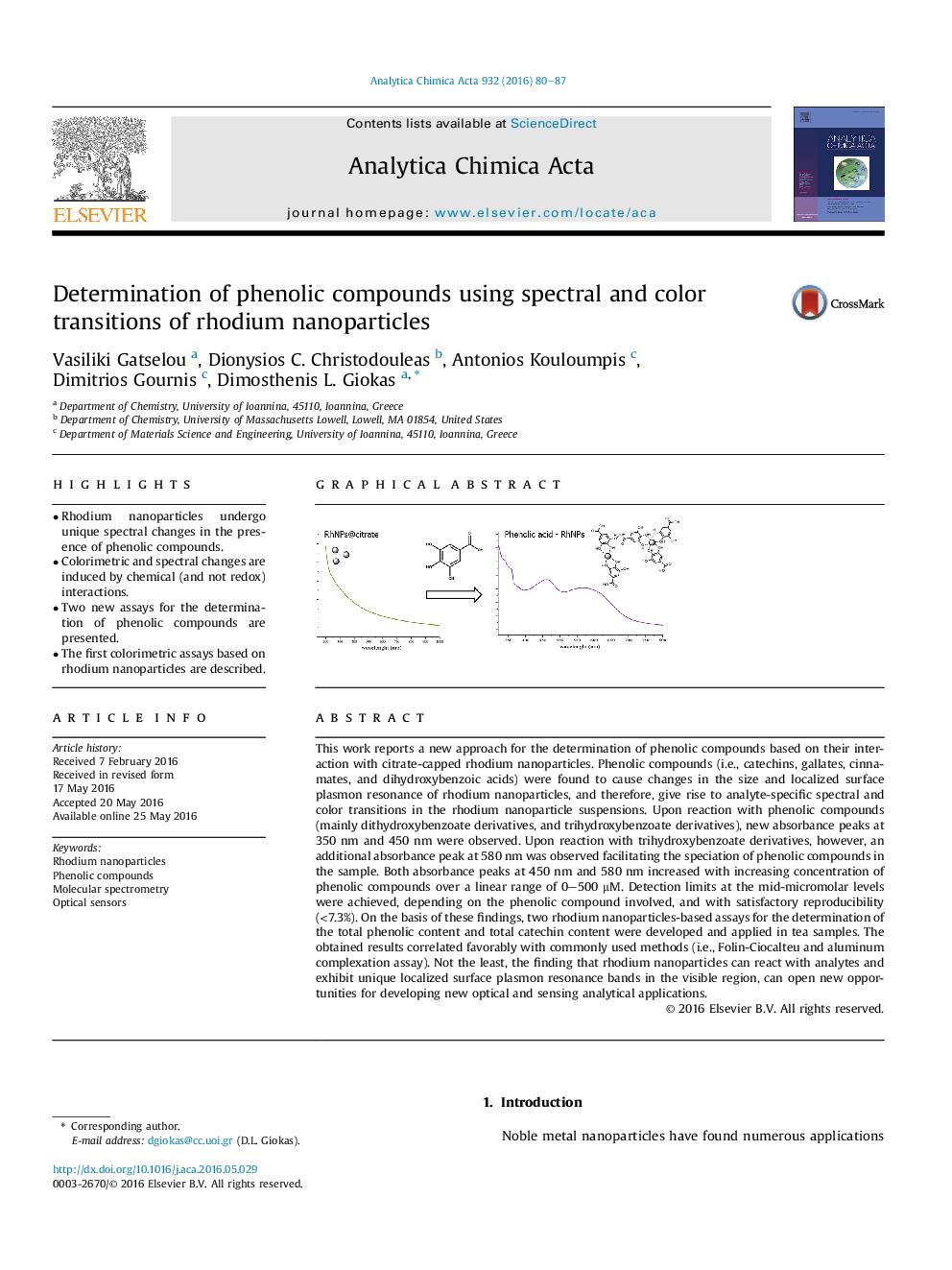| کد مقاله | کد نشریه | سال انتشار | مقاله انگلیسی | نسخه تمام متن |
|---|---|---|---|---|
| 1162784 | 1490900 | 2016 | 8 صفحه PDF | دانلود رایگان |
• Rhodium nanoparticles undergo unique spectral changes in the presence of phenolic compounds.
• Colorimetric and spectral changes are induced by chemical (and not redox) interactions.
• Two new assays for the determination of phenolic compounds are presented.
• The first colorimetric assays based on rhodium nanoparticles are described.
This work reports a new approach for the determination of phenolic compounds based on their interaction with citrate-capped rhodium nanoparticles. Phenolic compounds (i.e., catechins, gallates, cinnamates, and dihydroxybenzoic acids) were found to cause changes in the size and localized surface plasmon resonance of rhodium nanoparticles, and therefore, give rise to analyte-specific spectral and color transitions in the rhodium nanoparticle suspensions. Upon reaction with phenolic compounds (mainly dithydroxybenzoate derivatives, and trihydroxybenzoate derivatives), new absorbance peaks at 350 nm and 450 nm were observed. Upon reaction with trihydroxybenzoate derivatives, however, an additional absorbance peak at 580 nm was observed facilitating the speciation of phenolic compounds in the sample. Both absorbance peaks at 450 nm and 580 nm increased with increasing concentration of phenolic compounds over a linear range of 0–500 μM. Detection limits at the mid-micromolar levels were achieved, depending on the phenolic compound involved, and with satisfactory reproducibility (<7.3%). On the basis of these findings, two rhodium nanoparticles-based assays for the determination of the total phenolic content and total catechin content were developed and applied in tea samples. The obtained results correlated favorably with commonly used methods (i.e., Folin-Ciocalteu and aluminum complexation assay). Not the least, the finding that rhodium nanoparticles can react with analytes and exhibit unique localized surface plasmon resonance bands in the visible region, can open new opportunities for developing new optical and sensing analytical applications.
Figure optionsDownload as PowerPoint slide
Journal: Analytica Chimica Acta - Volume 932, 17 August 2016, Pages 80–87
